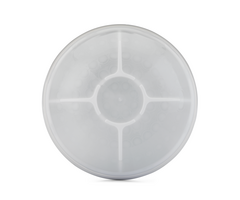Motion Detecting Sensors


Adding some motion detecting sensors to your system is very important. These sensors respond reliably to motion that occurs in the building while you are away. If an intruder manages to enter your property without setting off your system, then your motion sensors will serve as a good fall back option for detecting unwanted activity. Many users will install motion sensors in rooms with windows so that they can effectively cover these areas without using contact sensors or glass break detectors. Any intruder that enters will instantly set off the motion sensor, and the system will enter alarm.
Most motion sensors are set up with an Interior Follower Response Type. This means that the motion detecting sensor will be active whenever the system is Armed Away. Activating the motion sensor while the system is Armed Away will cause an immediate system alarm, unless an Entry/Exit Zone is faulted first. Activating an Entry/Exit Zone is usually necessary for entering your home to Disarm. However, the motion sensor will automatically be bypassed when the system is Armed Stay. This way, you can still move freely throughout the building when your system is Armed Stay.
Not every motion sensor will use the Interior Follower Response Type. Some users may want their motion sensor to be activate whether their system is Armed Away or Armed Stay. These users might prefer the Perimeter Response Type instead. By using a Response Type of Perimeter, an immediate alarm will occur if the motion sensor detects movement whenever the system is Armed. Another option is to use Interior With Delay. This will have the motion sensor operate much like an Entry/Exit Zone. The system must be Disarmed within an Entry Delay period, or else an alarm will occur.
Most motion sensors use passive infrared (PIR) technology to detect movement. This involves looking for the infrared (IR) energy that occurs with movement. Every person and object gives off a very small amount of IR energy. A motion sensor can detect this IR energy based on a change in temperature. When a large enough change in IR energy is detected, the motion sensor will know to alert the system. Many motion sensors have an adjustable pulse count that allows the user to increase or decrease device sensitivity. A higher pulse count will decrease device sensitivity by requiring a larger change in IR energy to set off the motion sensor. A lower pulse count will have the opposite effect.
Some motion sensors use microwave technology, in addition to PIR technology. These are referred to as dual-tech motion sensors. Microwave technology when used by motion detectors works by sending out microwave signals. The motion sensor can detect how these signals bounce off of objects and return to the sensor. If a new person or object enters the detection area, it will change the pattern of these microwave signals. All microwave motion sensors will also rely on the aforementioned PIR technology to detect movement. The motion sensor will not activate unless both the microwave and PIR sensors are tripped.









